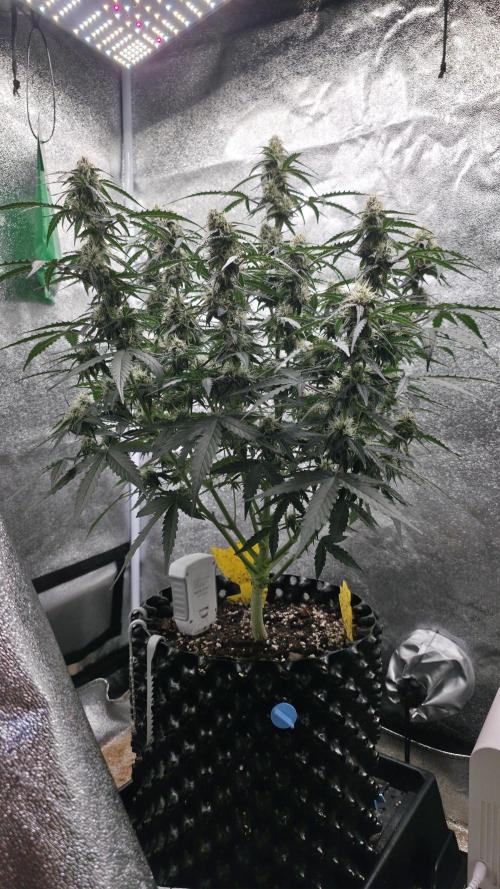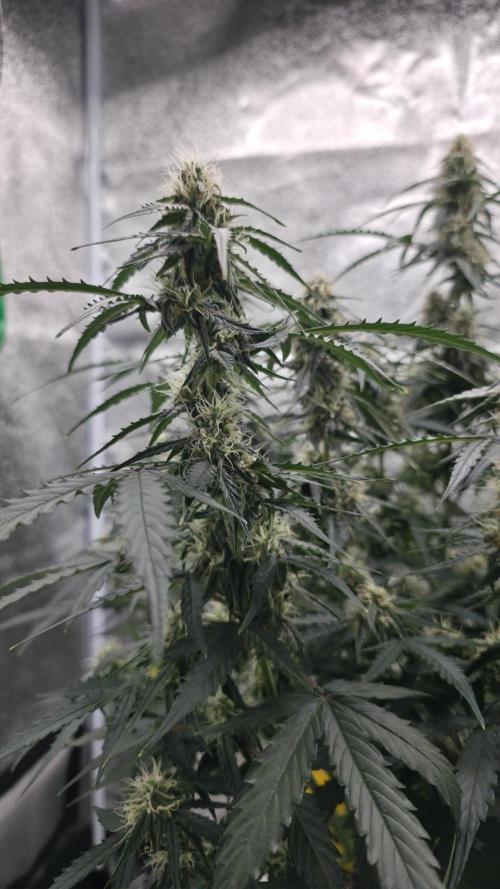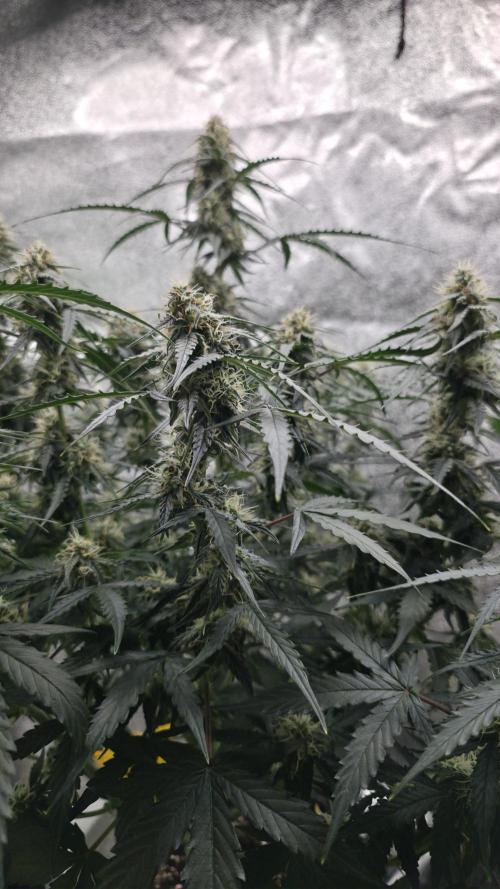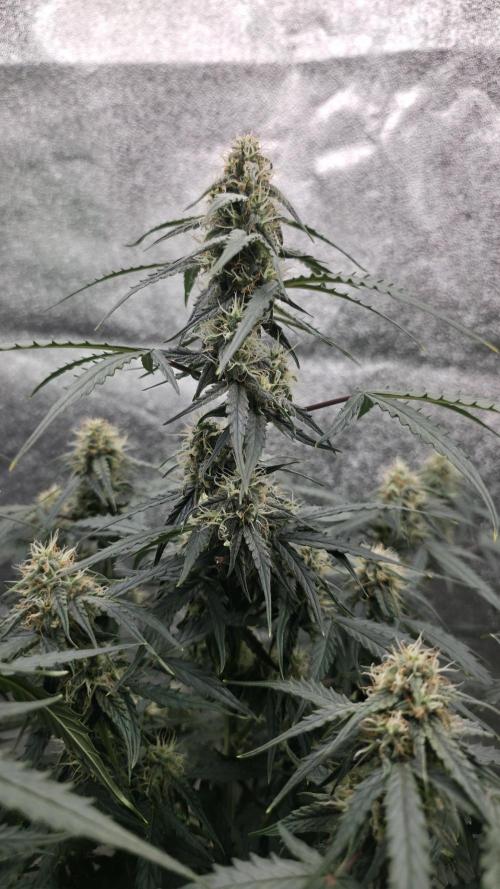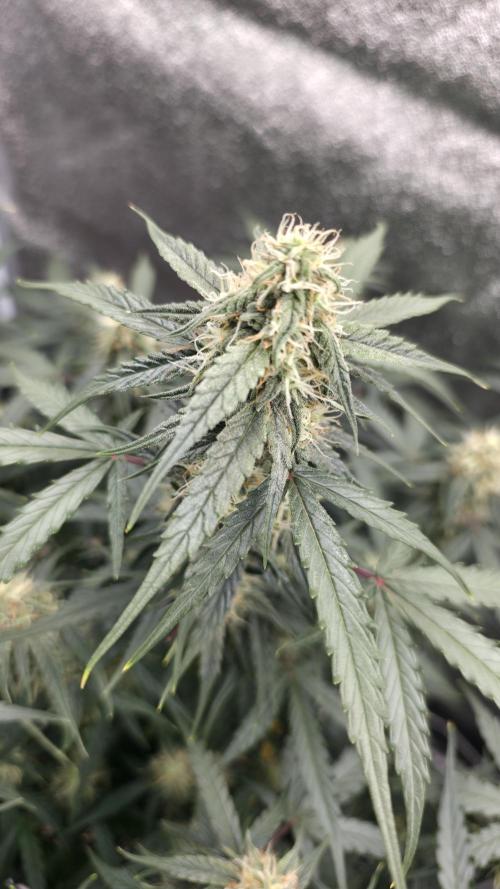By continuing to use the website or clicking Accept you consent to our cookies and personal data policy and confirm that you are at least 18 year old. For details please see Privacy Policy and Terms
Accept
Fan leafs, keep or remove?
UglyEartstarted grow question 2mo ago
Guys, should I get rid off my fan leafs?
I don't mean all of them but significant amount to help with airflow, she has about 2-3 weeks till flush. I'm struggling to maintain 40-45% rhythm
My vent set helps but I have spikes to 70%
Solved
likes
Schnabeldinoanswered grow question 2mo ago
A stressed plant won't recover much now — but light defoliation to prevent mold is worth the trade-off.
But for me personally, it looks pretty airy, there is enough space between the individual buds. In my opinion, further removal of the leaves is not necessary. I would just improve the air circulation as long as it is only up to 70% and not over a longer period of time, especially not at night.
AsNoriuanswered grow question 2mo ago
I took 0 leaves away this grow. Have a look, just finished chopping them.
I would do same if i start any grow.
I loved defoliation , thought its the way, half of my diaries here i used that technique, but now i am skeptic ....
1 like
Complain
Ultravioletanswered grow question 2mo ago
Keep everything you have left; nothing you remove en masse will improve your growth in any way. You have 2-3 layers of canopy penetration top down before reds and blues will drop off. Every leaf of your plant is at 90-100% of its photosynthetic efficiency; even if a leaf is not photosynthetically efficient, it can still perform full respiratory duties(gas exchange) just as efficiently.
Blah blah blah who cares? Your plant does, 90% of its ATP comes from the plant's ability to respire (mostly at night) within each leaf are the mitochondria, which are the power cells of the entire plant. Every leaf you remove without purpose is a drop in the plant's ability to produce "life currency." Call it what you will.
Snapping/chewing a plant's leaf is a common method to simulate herbivory in plant studies. This technique allows researchers to investigate how plants respond to mechanical damage, a key component of insect herbivory, and study the subsequent defense mechanisms triggered. From the 4th Week onward, once trichome production ramps up, I like to pinch off 1 leaf from every cola every other couple of days to enact the defensive mechanism and squeeze that extra 1% into the trichomes.
Don't worry about your humidity during the day if it drifts a little high; it normally helps with getting VPD dialed in. So long as your temps match the pace and are not ridiculously low hindering metabolic pathways.. It's 10x less effective at night as there is little to no transpiration or latent heat happening, keep nights around 45-55% to maintain a consistent negative pressure and encourage a little evaporation to assist with cellular respiration.
Airflow itself is a form of "Stress" which is applied to the plant to assist with building strong stems, also increases transpiration, and can also affect trichomes if "stressed" enough.
What a plant needs more than "Airflow" is oxygen, a constant replenishing supply, primarily at night, primarily in the root zones. Getting oxygen to the leaves at night is easy. Getting it into the soil overnight, all night, can only be achieved through the application of negative pressure linked to RH%. Negative pressure can facilitate oxygen diffusion into the soil; it's not the only factor, and the process is more complex than a simple cause-and-effect relationship. Negative pressure can draw air, and thus oxygen, into the soil and CO2 and nitrogen that have been broken down by microorganisms out.
Buds are primarily composed of water. Developing flower buds, like other plant tissues, require a significant amount of water for growth and turgor pressure, which helps maintain their structure and firmness.
Turgor pressure in plant cells is primarily generated by osmosis, but transpiration plays a crucial role in maintaining it.
Blah blah good luck.
1 like
Complain
00110001001001111Oanswered grow question 2mo ago
6 questions on defoliation... i'd wager the bases have been covered.
a spike to 70 temporarily isn't too big of a deal. You don't have to maintain 40-45. Depending on how tightly you control the climate, it's probably best to match RH to current temp based on resulting VPD. If you don't pay the high expense to control temps, you may want a moving target for RH.
One important thing to ensure - do not hit the dewpoint (100% rh). If you don't have a temp/rh probe, you don't see what happens after lights out. This is when temperatures drop and RH can spike (why it is called "relative" humidity). Since you are struggling with RH, make sure it's not going wild once the tent cools down. The little wireless probes are 10-15 usd, so it's worth the cost and you don't interrupt dark cycle - which is one of the worst things you can do. (if autoflower - no worries on interrupting dark cycle)
Venting outside cn help.. if you vent to the room that encompasses the tent, it just gets sucked back in so it won't really impact resulting RH too much. Otherwise you need a dehumidifier. It should be large enough for the room, not the tent size and also based on how many plants you grow or intend to grow -- more about canopy square footage, obviously.
some seasons have higher rh than others... this is why i grow in the winter. dehumidification is expensive and adds heat. If you grow year round need a dehum beefy enough for your wettest season.
as with duct fans, strongly recommend getting a step up from basic needs... less stress / wear-n-tear on the unit if it doesn't have to struggle 24/7 to maintain target RH.
removing leaves can reduce humidity, but also reduces potential of the plant. leaves are incredibly important anatomy.
1 like
Complain
Gnrlymsntrp81answered grow question 2mo ago
Doesn't look like too much, since she is alone in the tent with lots of space, I don't think removing some leaves will help you with RH. Also you have a lot of buds so keeping as much leaves as possible is good for her. But stop giving her N she's already pretty dark green.
She's a Beauty anywa.
much
1 like
Complain


